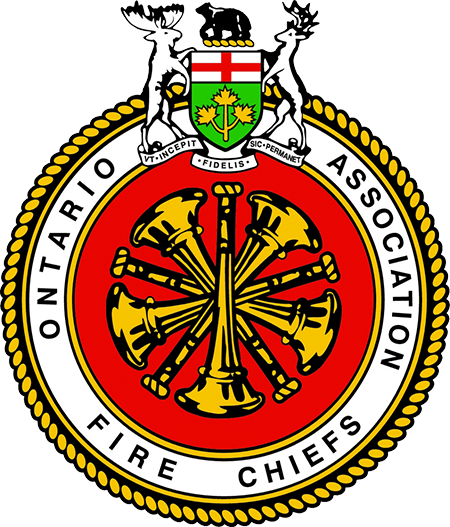Kirkland Lake Fire Services recently hosted a five-day training session where firefighters from Kirkland Lake and surrounding areas could hone their skills with the assistance of the Ontario Fire College Mobile Live Fire Training Unit and its instructors, one of two units provided by the province.
Out-of-town departments and brigades responded to the training invitations with what available time they had, while local firefighters came out every chance they could.
“It’s been an excellent week,” said Kirkland Lake Fire Services Chief Earl Grigg. “The invite that went out was from New Liskeard to Matheson, to the Quebec border to Matachewan First Nation. We invited everybody.”
Grigg said not everyone was able to make it but was pleased with the sixty-five participants that did.
“We got at least ten a day,” praised Grigg, “so that was a good thing.”
The state-of-the-art live fire training simulator is equipped with propane cylinders and generators that can operate independently of outside sources. The movable walls can be configured for different scenarios such as kitchen, bed, couch, wall fire, and rollover. A second storey can be raised, and props are available.
This mobile unit allows firefighters to respond using their own equipment, in their own area, with their own team. Firefighters are exposed to real dangers including flames, extreme heat, high humidity, severely restricted visibility, and thick smoke which they are confronted with in real-world emergencies.
Skills training included fire suppression, pumper operations, and incident management systems. The unit is equipped with shut-offs to ensure the safety of the firefighters. A recent water main break at Government Road West and Al Wende left the Water Lane location dry for the last day of the event, so no fire simulations were held but there was no shortage of real danger for affected areas. Currently right now, continued Grigg,
“Kenogami, Round Lake, and King-Lebel fire department, we’ve sent them notice that we’ll be calling and asking for tanker assistance. It will be a delayed response from them. Currently, we do have around 2,500 gallons of water on the apparatus itself, with foam. And with the foam, we’re able to start to suppress the fire, and hopefully, by that time we’ll have the other departments starting to show up with water.”
“We weren’t allowed to do any live fire for them,” said Ontario Fire Instructor Andrew Blair who led the mobile training unit alongside OFC Adjunct Instructor Shain Kimbell. “But it doesn’t mean the training has to stop. We had a lot of smoke. We could still fill the trailer with smoke; we could still create different rooms inside the trailer. They had very low visibility; they were crawling around.”
“Sometimes you have to pivot with the training,” added Blair, “and use what you have.”
Firefighters were still getting valuable training with breathing apparatus, communications, and incident management systems. Firefighters still trained with the empty hose line to practice maneuvering through the smoke-filled interior. It’s also a lifeline for rescuers trying to find their way back out, and not having the line charged with water makes it more difficult because it can get caught on stuff.
Five good solid days,” praises Blair, “huge commitment from these firefighters giving up their time away from their families which is greatly appreciated. This trailer provides them with some of the training that is difficult to get in-house.”
“The crew has done excellent,” says Grigg. “The ones that came out multiple days have definitely seen improvement. And I’ve seen improvement in the crews. It’s a good bonding experience with the crews, they get to work together. Some departments we might not see in six or seven months, now it’s a familiar face at three o’clock in the morning.”
“I think we did really well for not being an interior attack fire department,” praised Nick Kalnin, deputy fire chief for the Sesekinika Volunteer Fire Brigade on Sunday. “Because there was no fire, we got to go in and do some searches and other stuff that we don’t normally get to train on because it’s not something we do.”
Kalnin says most calls are motor vehicle collisions, forest fires and structure fires.
“Was chaotic a little bit because of our first time in smoke,” adds fellow Sesekinika volunteer firefighter Ryan Janssen. “Overall our team did pretty good. Nobody panicked, everybody came out. We were successful.”
Janssen, Kalnin and Jeff Davis made up the team of three that came out from the thirteen firefighters in their crew.
Super pleased to have the opportunity to do this,” continues Janssen. “Especially in the north. It’s hard to get this level of training in small communities in the north so we’re happy to see it.”
“I’m just glad and thankful that the province purchased this,” says KLFS Platoon Chief Paul Czovek, “and allows us to train on it without affecting our tax base or the town’s budget at all. They just allow us to all use it and come together and train with everybody else in the surrounding area.”
Czovek says he witnessed major progress from firefighters that came from KLFS, Larder, Savard, Round, King Kirkland, Kenogami and Sesekinika crews.
“More efficient movement, more confidence, and general overall better ability,” continues Czovek. “Sets and reps are key to this trade. ”
Czovek also said many people came out to watch, and that “it does look pretty real when it’s going.”
Spectators Danny and Patricia Sorochan came out on all five days and said what they saw would “blow you away.” Mister Sorochan is a past volunteer firefighter.
“And then watching these firefighters,” says Sorochan, ” go through their training and come out and be exhausted – unreal. They put them through a workout. It was really nice to watch, and really be able to understand what they’ve done, how it’s come this way. It’s just unreal.”
